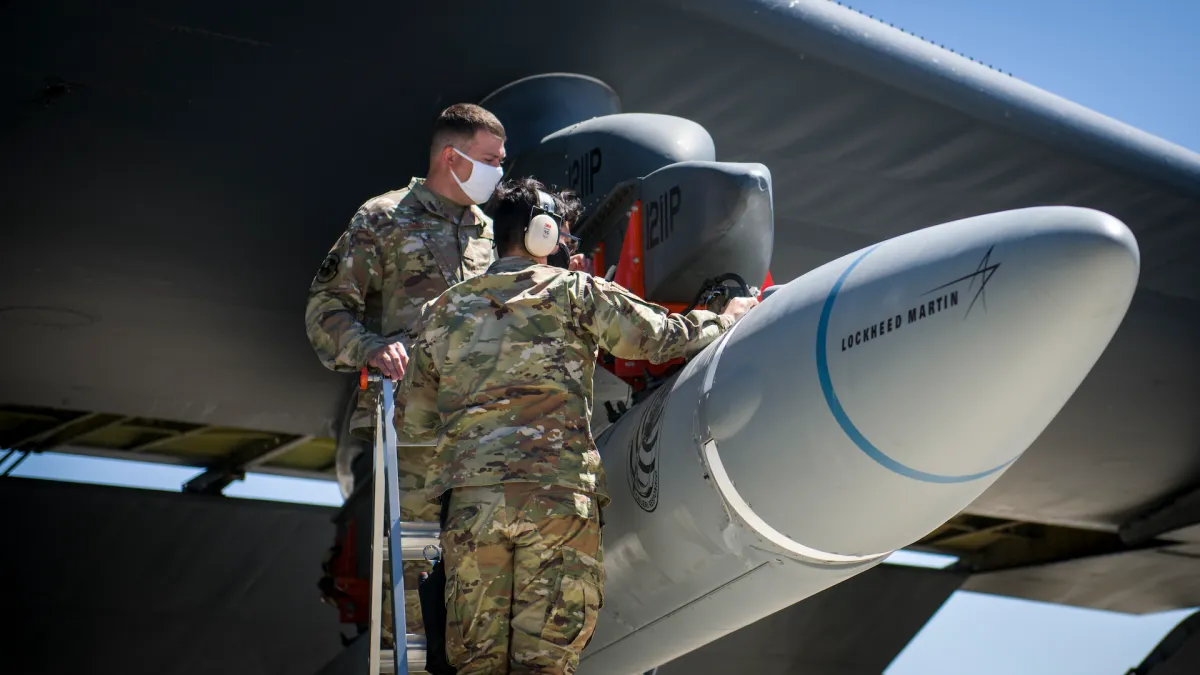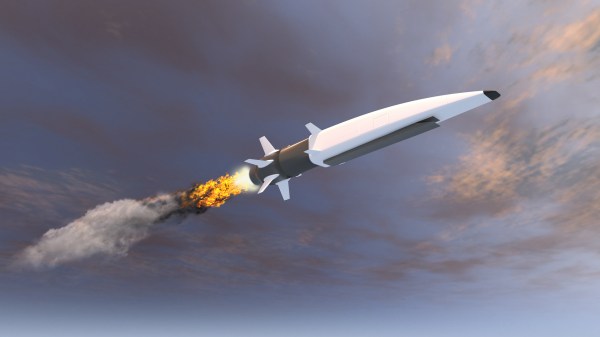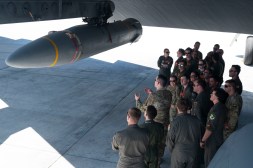Air Force begins all-up-round flight testing of ARRW hypersonic missile prototype

The Air Force recently conducted its first successful “all-up-round” flight test of a prototype operational ARRW hypersonic missile, marking a major milestone in the service’s pursuit of a new set of cutting-edge weapons that could attack time-sensitive targets.
The 412th Test Wing based at Edwards Air Force Base conducted the event off the coast of Southern California on Dec. 9, Air Force Materiel Command said in a press release on Monday.
“A B-52H Stratofortress [bomber] successfully released the first All-Up-Round AGM-183A Air-launched Rapid Response Weapon [ARRW],” per the release. “This test was the first launch of a full prototype operational missile. Previous test events focused on proving the booster performance. Following the ARRW’s separation from the aircraft, it reached hypersonic speeds greater than five times the speed of sound, completed its flight path and detonated in the terminal area. Indications show that all objectives were met.”
During a Mitchell Institute podcast released in August, Brian Schappacher, Lockheed Martin’s deputy program manager for the Air-Launched Rapid Response Weapon, noted that the program was facing an “extremely aggressive schedule” for development and testing.
Lockheed has been working on the system as part of a rapid prototyping program.
In a statement Monday, Brig. Gen. Jason Bartolomei, armament directorate program executive officer, noted that the ARRW team successfully designed and tested the air-launched hypersonic missile in a five-year time period — which by Defense Department standards is a short timeline for new cutting-edge weapon systems.
The ARRW could be operational as early as fall 2023 and will be considered for rapid production, according to a Dec. 4 Air Force Global Strike Command release. However, it’s unclear if the service will fully commit to the system.
The weapon is designed to enable the U.S. to hold “fixed, high-value, time-sensitive targets at risk in contested environments,” according to the Air Force.
The ARRW is a boost-glide system that relies on a rocket to propel the weapon to hypersonic speeds greater than Mach 5. In addition to flying at extremely high speeds, hypersonics are expected to be very maneuverable and pose a major challenge to adversaries’ air defenses.
These types of weapons are a top modernization priority for the Pentagon as it seeks to compete with China. It is pursuing several projects in addition to the ARRW.
The Air Force has a Hypersonic Attack Cruise Missile (HACM) program that will use scramjet technology instead of a boost-glide system to achieve hypersonic flight. And the Army and Navy are pursuing the Long-Range Hypersonic Weapon (LRHW) and Conventional Prompt Strike (CPS), respectively. The Army is aiming to field the LRHW next year, while the Navy plans to field CPS systems on destroyers by 2025.






